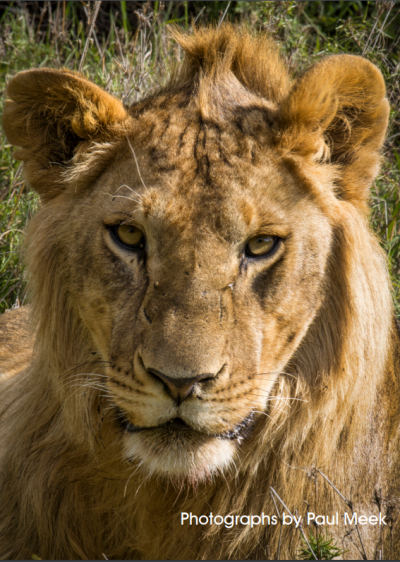News
Latest Lion Aid News
Trophy hunting - Once again into the fray…
Tuesday 14th January 2025
|
Soon, there will be a “second reading” in the House of Commons here in the UK of the Hunting Trophies (Import Prohibition) Bill. This Bill has been debated in Parliament two times before. The first time it sailed through, only to be defeated by filibustering in the House of Lords. The second time it went nowhere because of the new national elections in July last year.
Opponents to the passing of this Bill include trophy hunting operators and some academics who claim that trophy hunting is “beneficial” to the African nations that still allow the practice. Regardless of the 80% of the British public opposing such imports, the proponents all claim that trophy hunting benefits communities, prevents land being turned over to agriculture if there is no income from consumptive use of wildlife, allows funds to flow to national authorities charged with preventing poaching, makes rural people more amenable to sharing their land with wildlife, etc, etc. Actual proof of such “benefits” is hard to come by, and should remain classed as rhetoric until it is clearly shown via independent assessors where the money earned by hunting operators actually goes?
Meanwhile, sometimes extensive and sometimes limited trophy import prohibitions have been passed by Australia, the Netherlands, France, and more recently Belgium and Finland. Similar restrictions are being tabled in parliaments in Germany and Italy. Restriction of imports that require evidence that trophy hunting is “beneficial” to the hunted species are in place in the USA. But – now let’s assess what this import prohibition Bill could mean to British trophy hunters. It should be stated from the start that they as a group are not prolific, compared to let’s say trophy hunters from some other nations like Mexico, Spain, and Russia. So to determine what is actually imported into the UK by hunters I resorted to the CITES trade database (requiring much “interpretation” as I will detail below).
Over the ten years 2013 -2022 (when data reliable information ends) UK trophy hunters imported the following top nine trophies from African species:
Monkeys -142 (primarily baboons) Elephant – mostly from Zimbabwe – 69 Caracal (mostly from South Africa) – 62 Crocodile – 55 Hippopotamus – 47 Leopard – 45 Giraffe – 29 Serval - 15 Lion – 12
Average those numbers over the ten years, meaning that imports of lion trophies came to 1.2 per annum.
So why this “fondness” for monkeys? Probably because they are cheap. Going trophy fees for a baboon are anywhere from $60 to $400 depending on hunting operator and African hunting nation. Contrast that with costs of hunting a leopard (trophy fees about $7,500), elephant (trophy fee about $50,000 depending on tusk weight, much cheaper in Zimbabwe), and lion (trophy fees up to $35,000). Also, African hunting nations require payments of 3-4 week stays to hunting operators for some species like lions and elephants, while baboons have no such requirements.
These same African trophy hunting nations and their supporters say that such restrictions on hunting trophy imports are “neo-colonial”. This is of course nonsense. Hopefully the new Bill will be tactically formulated for passage to only initially restrict imports of a small number of the most endangered and vulnerable species (to give it the best chance of getting through). The list should be amendable to include more species over the years – like giraffes (of which increasing genetic and morphological data supports the existence of at least five species with very different conservation concerns).
Now, let’s come to the data I used to come to these numbers:
1. CITES export data for most hunted species is highly complicated and requires many filters. For example, I only used the “trophy” category, which can be criticised. A hunting trophy can fall into many different categories. A single elephant can be exported as “ears”, “feet”, “tusks”, “tail”. I just used my informed judgement after 15 years of working with CITES databases to cut through such fog. 2. CITES data is always at least two years behind. Also, an exported trophy could have been shot many years before the export date, as it could have been sitting in a taxidermist studio for example. In addition, trophy hunters increasingly object to the high costs of shipping their trophies and elect to “leave them behind”. A lion skin now a rug and shot many years ago still needs an export permit when the hunter repatriates to country of nationality. 3. The CITES database has always had considerable discrepancies in numbers of trophies exported versus imported. Sometimes this is caused because once an African nation issues a “quota”, such numbers are considered as theoretical exports rather than actual exports. On top of that, CITES only considers exports/imports. Especially in places like South Africa, resident and citizen hunter “harvests” do not appear in CITES data.
4. CITES data should only be used to indicate trends, not actual numbers. And many species favoured by trophy hunters do not appear in CITES data – one big example is the African buffalo. Giraffes were only included about five years ago…
Let's hope this Parliamentary Bill succeeds this time. We will keep you posted.
|
Add a comment | Posted by Chris Macsween at 13:04




